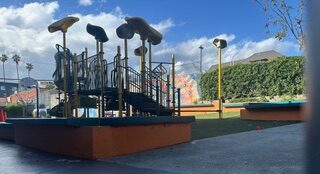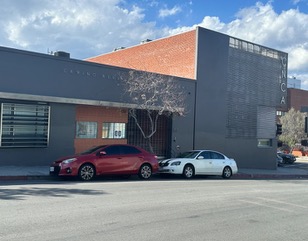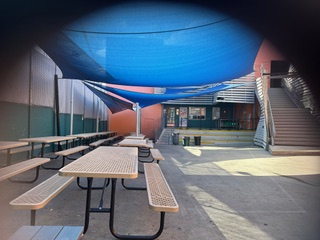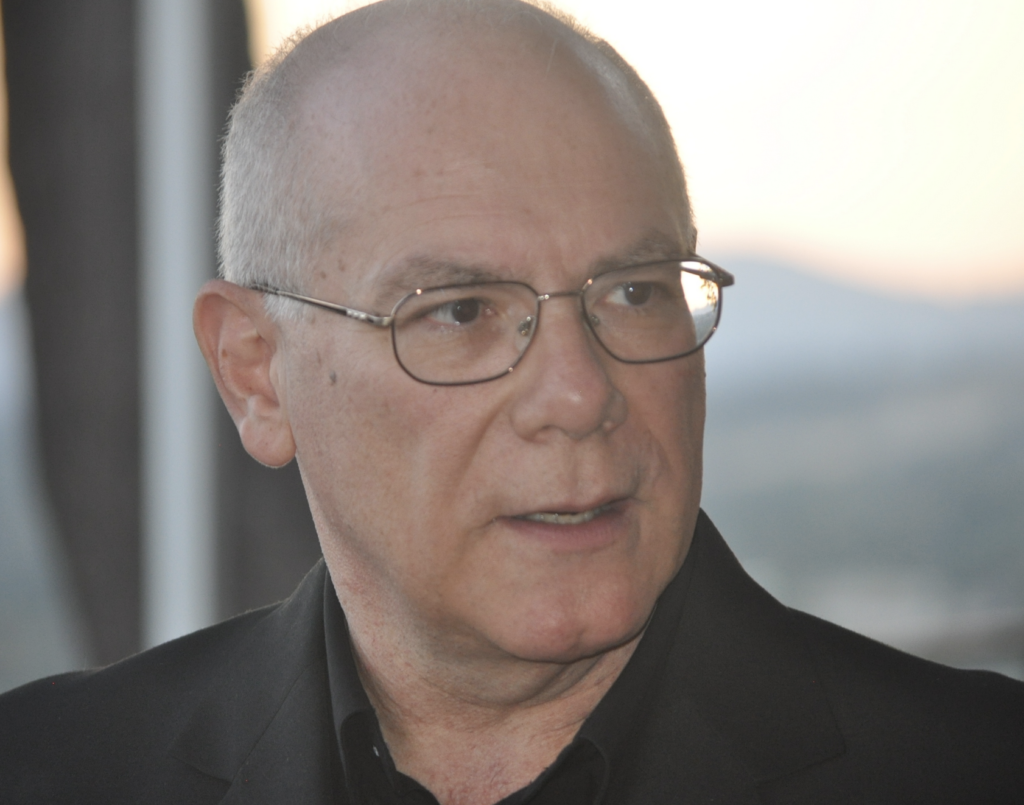Nestor Fantini | Hispanic LA
With global warming pushing temperatures beyond 100 degrees Fahrenheit, the lack of trees and green space has become a critical problem in schools, where youth vulnerable to the heat spend much of their lives.
This lack is especially concerning in densely populated urban centers like Los Angeles, which have hundreds of school institutions.
Camino Nuevo Charter Academy, in the MacArthur Park area of Los Angeles, is an example of this phenomenon that affect schools disproportionately in neighborhoods with a high percentage of racial and ethnic minorities and low-income households.
The lack of trees, grass, and other vegetation exacerbates the effects of extreme heat, a problem that has become more urgent as climate change worsens. During a heat wave in September 2022, for instance, California recorded 395 deaths beyond numbers that had occurred on average in previous years. Latinos were the hardest-hit group.
In the Los Angeles School District (LAUSD), where over 90% of the students are non-white, only 16% of the more than 778 schools have sufficient green space. This deficit negatively impacts air quality, mental and physical health, and student academic performance.
A school in the heart of Los Angeles
Camino Nuevo Charter Academy is a public school in the heart of MacArthur Park, a Los Angeles neighborhood with a lot of asphalt and a few trees. It is an area with a high population of low-income immigrants, mainly from Mexico and El Salvador. It is also an area where many crimes are reported and where the local M-13 gang has territorial control. This environment presents numerous challenges that are not only economic and social but also environmental.
The students of this school, who range from kindergarten to eighth grade, live daily with violence, people living on the streets, prostitution, and a lack of green infrastructure.
“To get to school, I walk three blocks,” said Pablo, a student who is always accompanied by his mother and who is picked up by a neighbor who also accompanies other students in the afternoon. “They look drunk or drugged, I don’t know, lying on the roadway.”
With an enrollment of 561 students, 100% of whom are minorities and 87% of whom come from economically disadvantaged homes, Camino Nuevo faces a harsh reality.
Other private buildings and a parking lot separate the building structures. This means that students have to be ushered down the public sidewalk every time they change buildings, either for lunch or for the day.
This means that students must be ushered down the public sidewalk every time they change buildings, whether for their midday lunch or other activities. This activity poses a real risk as they are exposed to traffic on South Burlington Street and the occasional vagrant loitering on the sidewalk.
The institution’s infrastructure is relatively small compared to other public schools. The playground is small and virtually devoid of trees and greenery, and students must contend with high temperatures and a lack of shade during recess.
What students say
“The schoolyard needs more shade,” said Wendy, who studies at the school. “There are only umbrellas, no trees. It would be nice to have more green spaces, but there is no room because the school is so small.”
Numerous studies have shown that the presence of green space in schools can significantly improve students’ health and well-being. These benefits include reducing stress, improving concentration and academic performance, and promoting healthy physical activities. At Camino Nuevo, without trees and grass, students aren’t able to enjoy these benefits.
“There is no garden, and now they are renovating. It would be nice if there were small spaces with plants and flowers so the younger children could play,” said Cristina, another student.
But for her, there are also other environmental problems.
“In the school, a lot of electricity is used unnecessarily. Sometimes the lights are on when they are not needed, the same with the air conditioning,” she sai of the inefficient use of resources.
Abigail, also a student at the school, expressed the need for additional security and better maintenance: “The schoolyard is very small, there are no green spaces, there are some trees, but there is little shade. There are many drinking fountains installed, there is no security, and when you have to change spaces to go to ‘break’, you have to go through the school sidewalk.”
“More security is needed because drunks outside leave trash and block the path. There are also a lot of homeless in the area that are on the same road we use to go to school,” she added.
A new initiative
Camino Nuevo’s lack of green space is a typical challenge confronting many schools in the region.
Recognizing the problem, the LAUSD Board of Education, which has jurisdiction over more than 600 schools, has launched an initiative to increase green space with a goal of reaching 30% green space by 2035.
This proposal includes planting trees and creating school gardens, which could significantly transform the learning sites where district students spend much of their days.
Although the plan is delayed, primarily due to financial constraints, the measures proposed are critical to expanding green space in Los Angeles schools. This expansion is not only a matter of infrastructure but of social justice and equity. Ensuring all students have access to a healthy and safe environment is critical to their holistic development.
Camino Nuevo Charter Academy represents the challenges and opportunities facing schools with scarce green space in disadvantaged communities throughout California. Addressing this lack as an environmental need is crucial to improving students’ health and building for them a more just and sustainable future.
This story was produced by Ethnic Media Services in collaboration with the Laboratory for Environmental Narrative Strategies (LENS) at UCLA as part of the Greening American Cities initiative supported by the Bezos Earth Fund.
Nestor Fantini wrote this fellowship story for Hispanic LA, a news outlet that has featured current affairs, politics, and art reflecting the Hispanic community throughout the U.S., and particularly in the LA area, since 2009.
“MacArthur Park School: Lots of Cement, Few Trees” features Camino Nuevo Charter Academy, in the MacArthur Park area of Los Angeles, a school like many in LA County where lack of green space is a critical problem for students and staff, as temperatures push more an more beyond 100 degrees Fahrenheit.







